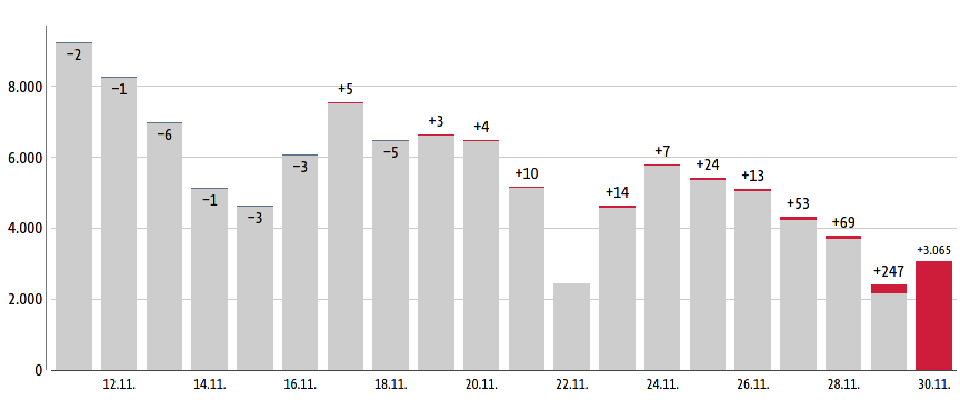Note: This is an automated translation (using DeepL) of the original German article.
These numbers regularly cause confusion - we explain the differences and why the values change
With the outbreak of the COVID-19 pandemic, one number suddenly moved to the center of the world’s attention: the number of new patients. No medium that did not publish this number daily. The number became a yardstick for the seriousness of the situation, an indicator for the efficiency of measures and the threshold from which measures are necessary. And it also became an irritation. Issued and updated several times a day from different places, it was only a matter of time before confusion arose. So which one is right now?
In Austria, two different figures are currently published: the daily report of the Federal Ministry of the Interior (BMI) and that of the Epidemiological Reporting System (EMS, published by AGES). Both figures refer to the number of new cases, but with a small, subtle difference:
- the BMI presents daily the number of newly reported positive test results.
- the AGES publishes the number of positive results tested on a given date.
So where is the difference or the problem?
To answer this, one must first take a look at the system of tests and evaluations.
When a patient is tested for COVID-19, the sample taken is sent to a laboratory for evaluation. At the moment, however, the laboratories are regularly overloaded with the number of tests and are working at the limit. Therefore there are always delays in the evaluation. Especially on weekends, when some of the staff is off, fewer test samples can be evaluated.
If an evaluated test sample turns out positive, it is registered in the Epidemiological Reporting System (EMS). As long as there are no (technical) problems. If the Internet or the EMS does not work, or the personnel is overloaded, this happens with a corresponding delay. It is possible that the test itself was performed several days before the (positive) result is registered in the EMS.
The difference between the BMI figures and the EMS data reported by AGES is as follows:
- the BMI publishes the number of (newly) reported positive tests every day. It is irrelevant whether the test was performed on the same day, one day ago or a week ago. And if a laboratory has had problems and has not reported any tests, then these are not in the BMI report. Experience shows that this results in lower BMI figures at the weekend (when there are fewer staff in the laboratories). However, when this backlog is cleared, this leads to increased values after the weekend.
- The figures published by AGES, on the other hand, are based on the date on which the tests were carried out. It does not matter whether the evaluation in the laboratory takes three hours, two days or a week: a positive test is always assigned to the day on which the sample was taken. Since the evaluation takes different lengths of time, this naturally has the effect that at AGES the number of “new” illnesses from previous days increases retroactively until all the results of tests taken on that day have been evaluated.
So it may be irritating that the number of “new” diseases of the BMI and the AGES differ, but there is a comprehensible reason for this. And it is also the reason why the number of new cases should be replaced by the [7-day average](/blog/covid-19-the-7-day average).
Note: The title graphic is a screenshot of the reporting of ORF.at on the topic COVID-19
